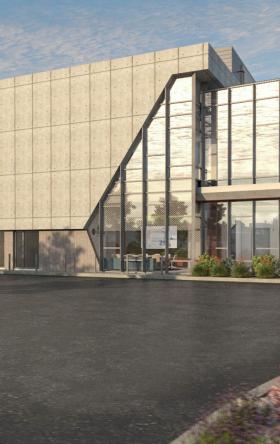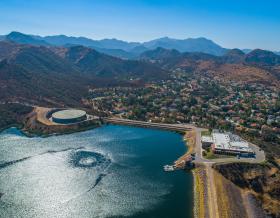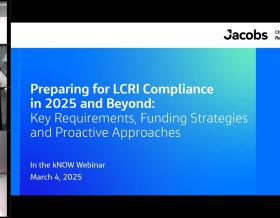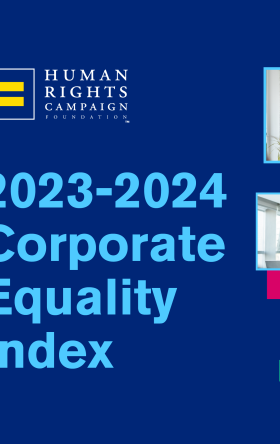A View on the Future of Cities & Places: A Q&A with Monte Wilson
Global built environment director shares how cities of the future are changing and what the environment can tell us about their design

From vibrant urban districts and connected campuses to parks and open space that offer a breath of fresh air, cities are a testament to human ingenuity and adaptability.
As climate change, rapid digitalization and shifts in global health and wellbeing continue to reshape how we live, cities face a growing list of challenges and opportunities, including: decarbonization and resilience, housing affordability and accessibility of essential services, job creation and inclusive growth.
Whether it’s strategic planning and architecture or interiors and design, our more than 5,000 teammates around the globe focus on creating places for people that integrate data, technology, mobility and connectivity to create great buildings, communities and cities that lay the foundations of the future.
In this Q&A, we connect with one of these teammates, Monte Wilson, our global director of the built environment, to talk about the trends and technologies shaping the places where we live, work and play.
Tell us a bit about what a day in the life is like as Jacobs Global Solutions Director for Cities, and what we offer to our clients in this area.
Connections, leadership and support are three words that come to mind when I think about a typical day as a Global Solutions Director. The role provides a great opportunity to connect with colleagues around the world and across the business, and for our built environment clients, this connectivity means ensuring we’re bringing the very best of Jacobs to a range of complex and important strategy, planning and design projects shaping cities and places around the world. I also play a leadership role on key accounts and in the pursuit and delivery of strategic projects.
What are the biggest challenges in cities and places today?
Cities around the world are working hard to reset in the post-pandemic hybrid work environment. Lower office occupancy is putting significant pressure on downtown retail and restaurant businesses creating empty storefronts and fewer eyes on the street. This very same challenge is creating an opportunity to reposition under leveraged office buildings into much needed housing stock. These trends will play themselves out across large and small cities around the world. These pressures are challenging city leaders and real estate owners to focus heavily on the creation and curation of authentic places that attract people and drive investment.
How do you help clients think differently to respond to future challenges?
We talk a lot about systems thinking and integrated solutions. The challenges we’re facing today demand thinking more broadly about how we deliver multi-functional infrastructure and real triple-bottom-line value. We also talk about the importance of design. Beautiful and highly functional buildings and places increase economic benefit and provide meaningful social value.
Our teams globally work with our clients and partners to explore how we’re delivering these outcomes through the built environment, working to leave a lasting impact through every project we deliver. In fact, we worked with our partner, Simetrica-Jacobs, a global leader in social value, well-being research and impact evaluation, to release a blueprint for creating social value through infrastructure investments and continued building on this topic with the ongoing series “Beyond the Baseline” series exploring how infrastructure projects can leverage the once-in-a-generation opportunity to deliver transformative outcomes at scale.
Together, we’re creating more balanced outcomes and places that ultimately are sustainable and resilient, safe and clean, beautiful and generous, exciting and authentic, and economically vibrant and socially beneficial.
With climate impacts and urbanization pressures facing communities globally, where do you see the industry heading?
The industry will continue to move toward integrated resilience and sustainability with a growing emphasis on nature-based solutions and ultimately nature positive impact. Data and user centric digital solutions will support sustainability outcomes and digital placemaking.
A great example of this intersection is biomimicry, a design and innovation approach that learns from nature’s genius and applies its blueprints, strategies and best practices to improve and invent solutions that create the conditions conducive for all life to thrive. The natural world offers us an endless source of inspiring and novel ways to reimagine how we solve pressing challenges to help our clients achieve next-level sustainability performance. Biomimicry helps engineers, architects, landscape architects and planners understand, emulate and facilitate ecosystem services – the multi-faceted benefits that natural ecosystems provide to humanity (such as air quality, carbon sequestration, water cycle management, aesthetics, and renewable energy), in order to deliver health and wellness benefits through their designs. We’re seeing promising outcomes from this methodology on projects across end markets – from transportation and advance manufacturing to healthcare.
Is there a project you’re particularly proud of?
The vision plan for The Stitch in Atlanta is one that I’ll always be proud of. The initial assignment was to develop a plan for a park over the interstate in downtown Atlanta. We challenged our client to think bigger about what was possible and ultimately created a vision for reconnecting (stitching) the city back together, welcoming billions of dollars in potential development and property value and connecting more than 480,000 people to their downtown. We introduced bold ideas that challenged conventional thinking, we named and branded the project that is still alive today and we had a great time doing it.
It's those impacts, where we’re reimagining the buildings and spaces around us and ultimately improving the livelihoods of those who call these places home, that make work meaningful.
About the interviewee
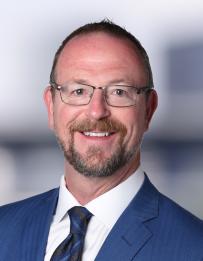
Monte Wilson is the Global Solutions Director for the Built Environment at Jacobs, responsible for partnering across the business to create an integrated strategy for architecture, interiors, building systems, health and cities and places. He operates at the intersection of strategy, design, technology, sustainability and resilience on projects at every scale. Monte’s diverse experience and passion allows him to engage with clients at a strategic level in the delivery of innovative planning and design solutions. His specific areas of expertise include city-scale sustainability and applying systems thinking to a range of projects including urban regeneration, mixed-use/transit-oriented development as well as university, research and corporate campus master plans. One of his favorite aspects of the job is supporting teammates in problem solving, career development, project work and navigating the Jacobs network. Outside of work, he enjoys entertaining family and friends, and all things outdoors and sports related.
